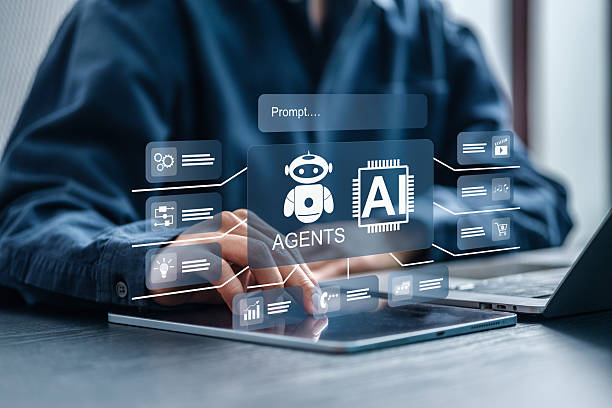What is Artificial Intelligence and Why is it Important?
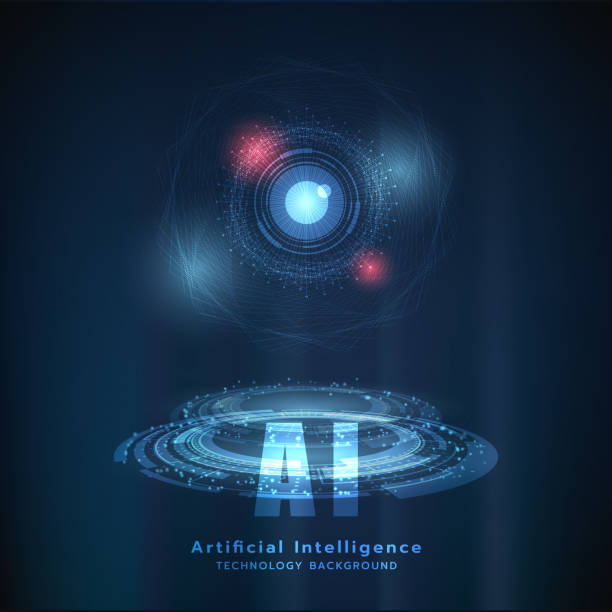
Artificial Intelligence (#AI) is no longer a science-fiction concept; rather, it is rapidly becoming an inseparable part of our daily lives.
From movie recommendation systems on Netflix to self-driving cars, the footprint of AI can be seen everywhere.
But what exactly is #Artificial_Intelligence? Simply put, AI refers to a machine’s ability to imitate human cognitive functions, such as learning, reasoning, and problem-solving.
Artificial Intelligence is not just an engineering discipline; it is a multidisciplinary field that encompasses computer science, mathematics, statistics, psychology, and even philosophy.
The importance of AI lies in its ability to solve complex problems and automate repetitive tasks.
This leads to increased productivity, reduced costs, and the creation of new opportunities across various industries.
In other words, #AI has the potential to fundamentally transform how we live and work.
This new technology, using complex algorithms and neural networks, enables machines to learn from data, recognize patterns, and make intelligent decisions.
As a result, we can expect significant advancements in fields such as medicine, transportation, education, and manufacturing.
For instance, in medicine, #AI can help with faster and more accurate disease diagnosis, and in transportation, self-driving cars can enhance safety and efficiency.
In summary, the importance of Artificial Intelligence lies in its ability to solve major challenges and create a better future for all of us.
Do you have an e-commerce website but your sales aren’t as expected? Rasaweb solves your problem forever by designing professional e-commerce websites!
✅ Significantly increase conversion rates and sales
✅ Unparalleled user experience for your customers
⚡ Click here to get a free consultation with Rasaweb!
Types of Artificial Intelligence from Different Perspectives
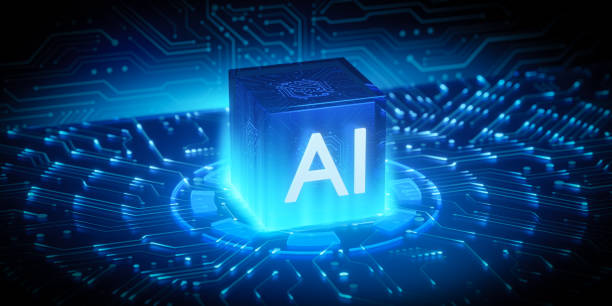
Artificial Intelligence (AI) can be categorized from various perspectives, each offering different insights.
One of the most common methods is classification based on capabilities, which divides #AI into three main types: Narrow AI, General AI, and Super AI.
Narrow AI, which is the most common type today, is designed to perform a specific task.
Examples include movie recommendation systems, voice assistants like Siri and Alexa, and facial recognition software.
These systems are very good at their tasks, but cannot operate beyond them.
General AI, which has not yet been fully realized, refers to intelligence that can perform any intellectual task a human can.
This type of #AI possesses self-awareness and consciousness and can learn and reason independently.
Super AI, which surpasses even human intelligence, is a hypothetical concept with the potential to bring fundamental transformations to society.
Another categorization, based on functionality, divides #AI into four types: Reactive Machines, Limited Memory Machines, Theory of Mind Machines, and Self-Aware Machines.
Reactive machines, like Deep Blue which defeated Garry Kasparov in chess, only react to current inputs and have no memory of past experiences.
Limited memory machines, such as self-driving cars, can use past experiences to make decisions, but their memory is limited.
Theory of mind machines, which are still under development, can understand the motivations and emotions of others.
Self-aware machines, a hypothetical concept, possess self-awareness and can reason about their own thoughts and feelings.
Understanding these categorizations helps us better comprehend the various potentials and limitations of #AI.
Machine Learning: The Backbone of Artificial Intelligence
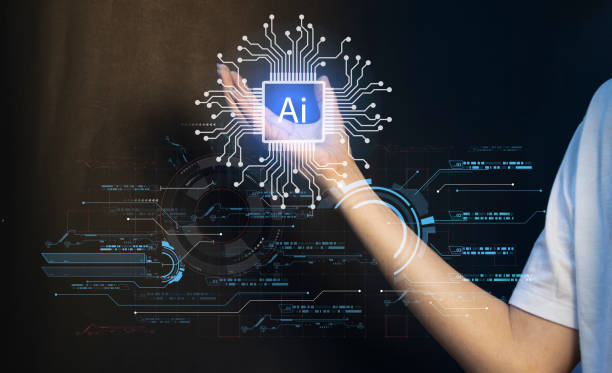
Machine Learning can be considered the core and backbone of #Artificial_Intelligence.
Machine Learning is a branch of #AI that enables machines to learn from data without explicit programming.
In other words, instead of being given precise instructions, machines use algorithms and statistical models to discover patterns and relationships in data and make decisions based on them.
There are various types of machine learning algorithms, each suitable for a particular kind of problem.
Supervised Learning, Unsupervised Learning, and Reinforcement Learning are among the most important.
In supervised learning, the machine is trained using labeled data.
This means that each data sample has a label indicating the correct answer.
By observing these samples, the machine learns how to predict the labels.
Examples of supervised learning applications include image recognition, spam detection, and stock price prediction.
In unsupervised learning, the machine is trained using unlabeled data.
In this case, the machine must independently discover patterns and structures within the data.
Examples of unsupervised learning applications include customer clustering, anomaly detection, and dimensionality reduction.
In reinforcement learning, the machine learns how to maximize a specific goal by trial and error in a given environment.
By receiving rewards or penalties for each action, the machine learns which actions lead to better outcomes.
Examples of reinforcement learning applications include computer games, robotics, and traffic control.
| Learning Type | Data Type | Goal | Example |
|---|---|---|---|
| Supervised Learning | Labeled | Predict Label | Spam Detection |
| Unsupervised Learning | Unlabeled | Discover Patterns | Customer Clustering |
| Reinforcement Learning | Environment and Reward | Maximize Reward | Computer Games |
Neural Networks and Deep Learning: A Revolution in Artificial Intelligence

Neural Networks and Deep Learning, as one of the most important and advanced areas of #Artificial_Intelligence, have created a revolution in this field.
Neural networks are inspired by the structure of the human brain and consist of many nodes (neurons) connected in layers.
Each neuron performs a simple mathematical function and transmits signals to other neurons.
Deep learning is a subset of machine learning that uses deep neural networks (networks with many layers) for learning.
These networks are capable of discovering more complex patterns in data and achieving better results.
One of the most significant advantages of neural networks and deep learning is their ability to automatically learn important features from data.
In other words, engineers do not need to manually define the required features; instead, the networks extract these features from the data themselves.
This makes neural networks highly suitable for solving complex problems that require a deep understanding of data.
Examples of neural network and deep learning applications include image recognition, language translation, natural language processing, and speech recognition.
For instance, neural networks can recognize images with very high accuracy and identify objects within them.
Furthermore, these networks can translate between different languages and automatically generate text.
As a result, neural networks and deep learning have become powerful tools for solving various problems across different domains.
Are you worried your company’s old website might drive away new customers? Rasaweb solves this problem by designing modern and efficient corporate websites.
✅ Increases your brand’s credibility.
✅ Helps attract targeted customers.
⚡ Contact Rasaweb for a free consultation!
Amazing Applications of Artificial Intelligence in Various Industries
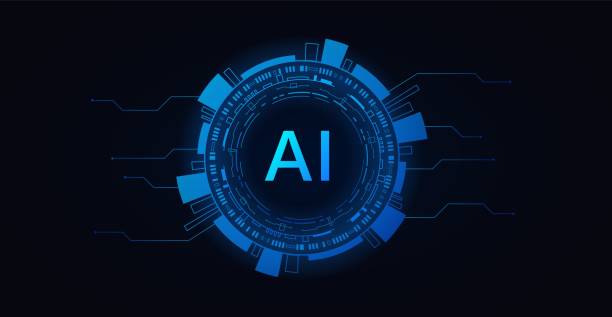
Artificial Intelligence (AI) is rapidly penetrating various industries and offering amazing applications.
In the field of medicine, AI can help with faster and more accurate disease diagnosis, the development of new drugs, and the provision of personalized healthcare.
For example, machine learning algorithms can detect diseases like cancer in early stages by analyzing medical images such as MRI and CT scans.
Additionally, AI can develop drugs that are more effective for specific patients by analyzing genetic and clinical data.
In the field of transportation, self-driving cars can increase safety and efficiency and reduce traffic.
These vehicles use sensors and cameras to perceive their surroundings and make driving decisions using #AI algorithms.
In manufacturing, AI can help automate processes, improve product quality, and reduce costs.
For example, #AI-powered robots can perform repetitive and dangerous tasks, and machine vision systems can detect product defects.
In the financial sector, AI can help with fraud detection, risk management, and personalized financial advice.
For example, machine learning algorithms can identify suspicious patterns in financial transactions and issue necessary alerts.
Furthermore, AI can provide personalized financial advice to clients by analyzing financial and investment data.
These are just a few examples of the amazing applications of #AI across various industries, and more applications of this technology are expected in the future.
Challenges and Limitations of Artificial Intelligence
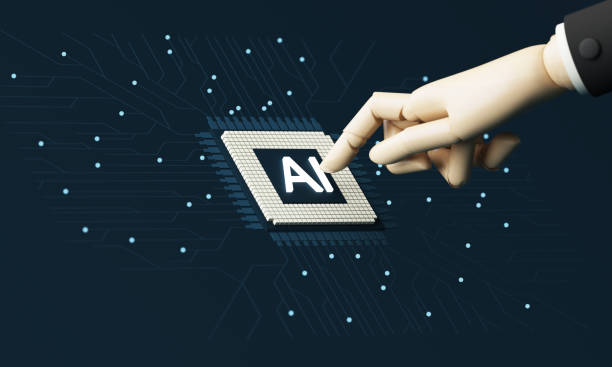
While #Artificial_Intelligence has the potential to bring fundamental transformations to society, there are also significant challenges and limitations that need to be addressed.
One of the most important challenges is the issue of bias in data.
If the data used to train #AI algorithms is biased, then #AI systems will also be biased.
This can lead to discrimination and inequality in decision-making.
For example, if a facial recognition system is trained using data that primarily includes images of white people, it might have lower accuracy in recognizing the faces of people of color.
Another challenge is the issue of transparency and explainability.
Many #AI algorithms, especially deep neural networks, are known as “black boxes”; meaning it is difficult to understand how these algorithms arrived at a particular decision.
This can reduce trust in #AI systems and make accountability more difficult.
Also, the issue of security and privacy is very important.
#AI systems can be vulnerable to cyberattacks and expose sensitive data.
Furthermore, the use of #AI for collecting and analyzing personal data can violate individuals’ privacy.
Finally, the issue of social and economic impacts must also be considered.
#Artificial_Intelligence has the potential to replace many jobs and can lead to increased economic inequality.
Therefore, it is necessary to develop policies and programs to mitigate these negative effects and create new job opportunities.
What Will the Future of Artificial Intelligence Look Like?
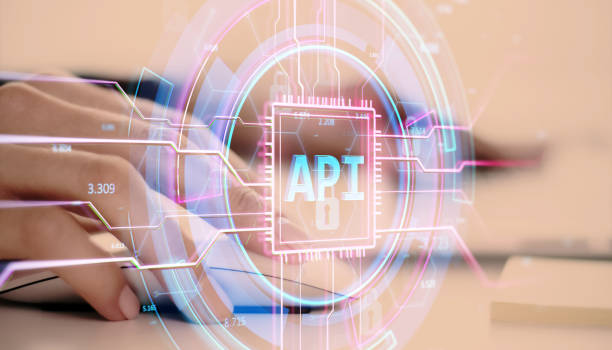
The future of #Artificial_Intelligence (AI) is both exciting and unpredictable.
With rapid advancements in machine learning, neural networks, and natural language processing, #AI is expected to play a much more significant role in our lives in the future.
One of the most important future trends is the development of Artificial General Intelligence (AGI).
As mentioned earlier, #Artificial_General_Intelligence refers to intelligence that can perform any intellectual task a human can.
Although we still have a long way to go to achieve #AGI, research and advancements in this field are ongoing.
The development of #AGI can lead to fundamental transformations in society and create new opportunities in various fields.
Another trend is the increasing integration of #AI with other technologies.
For example, #AI can be integrated with the Internet of Things (IoT) to create smarter systems.
Additionally, #AI can be integrated with robotics to create robots capable of performing more complex tasks.
Furthermore, #AI is expected to play a more significant role in the healthcare sector.
#AI can help with faster and more accurate disease diagnosis, the development of new drugs, and the provision of personalized healthcare.
It can also help improve hospital management and reduce healthcare costs.
Overall, the future of #Artificial_Intelligence appears bright and promising, and this technology is expected to play a very important role in improving human lives.
Artificial Intelligence and Ethics: The Fine Lines of Responsibility
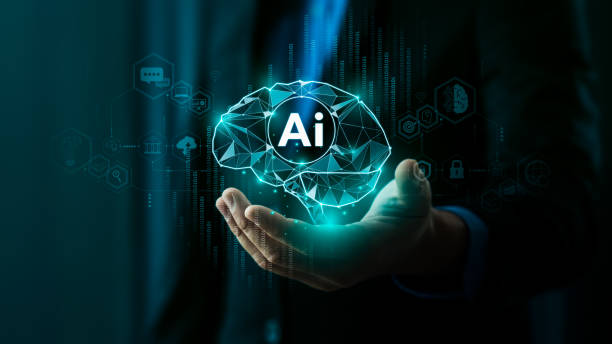
Concurrent with significant advancements in the field of #Artificial_Intelligence (AI), ethical issues are also gaining more importance.
One of the most important of these issues is the question of responsibility.
If an #AI system makes a wrong decision and causes damage, who is responsible? Is the system developer responsible? Is the system user responsible? Is the system itself responsible? The answers to these questions are not easy and require careful discussion and examination.
Another issue is the question of privacy.
#AI systems are often used to collect and analyze personal data.
This can violate individuals’ privacy and lead to data misuse.
Therefore, it is necessary to establish regulations and laws to protect individuals’ privacy from #AI misuse.
Furthermore, the issue of transparency is also very important.
Users must know how #AI systems make decisions and how their data is used.
This helps users make more informed decisions about using #AI and increases trust in the systems.
Finally, the issue of fairness must also be considered.
#AI systems must not be discriminatory and should treat all individuals fairly.
This requires that the data used to train #AI algorithms be free of bias, and algorithms be designed to prevent discrimination.
These ethical issues are only some of the challenges that arise with the development of #Artificial_Intelligence and require careful attention and examination.
| Ethical Issue | Description | Potential Solutions |
|---|---|---|
| Responsibility | Who is responsible for wrong decisions made by AI systems? | Establish legal and ethical frameworks for accountability |
| Privacy | How can we protect individuals’ privacy from AI misuse? | Formulate regulations and laws to protect privacy |
| Transparency | Users must know how AI systems make decisions. | Increase transparency in the design and operation of AI systems |
| Fairness | AI systems must not be discriminatory. | Use unbiased data and design fair algorithms |
Did you know that 94% of users’ first impressions of a business are related to its website design? With professional corporate website design by **Rasaweb**, transform this first impression into an opportunity for growth.
✅ Attract more customers and increase sales
✅ Build credibility and trust in the eyes of the audience⚡ Get a free website design consultation!
How to Learn Artificial Intelligence? Practical Learning Resources

Learning #Artificial_Intelligence (AI) can be an exciting and rewarding journey.
Fortunately, many educational resources are available to help you progress from beginner to advanced levels in this field.
One of the best ways to start is by enrolling in online courses.
Websites like Coursera, edX, and Udacity offer various courses in different #AI fields, taught by prominent professors from reputable universities.
These courses usually include video lectures, practical exercises, and hands-on projects.
Another way is to study books.
There are many books on #AI that fully explain basic and advanced concepts.
Some famous books in this field include “Artificial Intelligence: A Modern Approach” by Stuart Russell and Peter Norvig, and “Deep Learning” by Ian Goodfellow, Yoshua Bengio, and Aaron Courville.
Additionally, participating in workshops and conferences can also be very beneficial.
These events provide an opportunity to meet #AI experts, stay informed about the latest advancements in the field, and enhance your skills.
Finally, practice and practical projects are very important.
Try to apply the concepts you learn in practical projects.
This will help you better understand the concepts and strengthen your skills.
Websites like Kaggle offer #AI competitions and projects that you can participate in to challenge your skills.
Artificial Intelligence in Iran: Current Status and Future Outlook
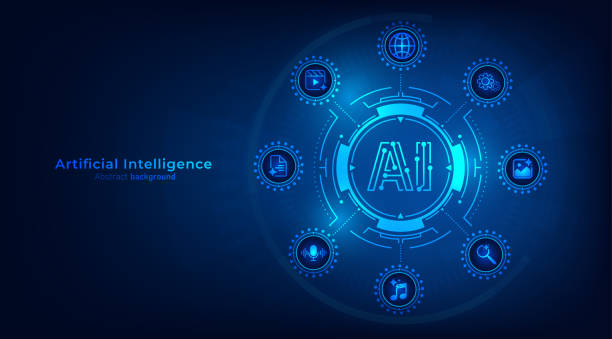
Artificial Intelligence (AI) is also rapidly developing in Iran and has high potential to bring about fundamental transformations in various industries.
Currently, a large number of companies and startups in Iran are active in the field of #AI and are developing #AI-based solutions to solve various problems.
These companies operate in areas such as natural language processing, machine vision, machine learning, and robotics.
IranNLP is an example of notable efforts in this field.
Furthermore, Iranian universities also play an important role in the development of #AI.
Reputable Iranian universities offer various educational and research programs in #AI, and many students and researchers are active in this field.
Additionally, the Iranian government supports the development of #AI and implements programs to promote the use of this technology across various industries.
However, there are also challenges in the path of #AI development in Iran.
Shortage of skilled personnel, lack of financial resources, and limitations in data access are among these challenges.
Nevertheless, given Iran’s high potential in the field of #AI, significant advancements are expected in this area in the future, and #AI is anticipated to play a more important role in Iran’s economy and society.
Indeed, Artificial Intelligence has the potential to become a powerful lever for the country’s growth and development.
Frequently Asked Questions
| Question | Answer |
|---|---|
| 1. What is Artificial Intelligence (AI)? | It is a branch of computer science that aims to create machines capable of simulating human intelligence and performing tasks that require human thinking, such as learning, problem-solving, and decision-making. |
| 2. What are the main types of Artificial Intelligence? | They can be classified into Narrow AI, which focuses on a specific task; General AI, which possesses comprehensive human capabilities; and Super AI, which surpasses human intelligence. |
| 3. Mention some common applications of Artificial Intelligence in our daily lives. | These include voice assistants (like Siri and Alexa), recommendation systems (like Netflix and Amazon), self-driving cars, facial recognition systems, and spam filters. |
| 4. What is the difference between Artificial Intelligence and Machine Learning? | Artificial Intelligence is the broader concept of creating intelligent machines, while Machine Learning is a subset of AI that focuses on enabling systems to learn from data without explicit programming. |
| 5. What is Deep Learning? | It is a subset of Machine Learning that uses multi-layered artificial neural networks (deep neural networks) to process data and discover complex patterns, and is used in image and speech recognition. |
| 6. What are the most prominent benefits of Artificial Intelligence? | Improving efficiency and productivity, automating repetitive tasks, making better decisions based on big data analysis, and developing solutions for complex problems in fields such as medicine and science. |
| 7. What are the main challenges facing the development and deployment of Artificial Intelligence? | These include the need for vast amounts of high-quality data, privacy and security issues, bias in data and algorithms, and high development and maintenance costs. |
| 8. Does Artificial Intelligence raise ethical or social concerns? | Yes, it raises concerns related to privacy, algorithmic bias, job displacement due to automation, responsibility for errors made by intelligent systems, and the need for a regulatory framework. |
| 9. How can Artificial Intelligence affect the future of the job market? | It can lead to the automation of some routine jobs, but it will also create new jobs that require advanced skills in developing, operating, and maintaining AI systems. |
| 10. What are some modern or promising technologies in the field of Artificial Intelligence? | These include advanced Natural Language Processing (NLP) (such as large language models like ChatGPT), computer vision, robotics, and Generative AI. |
And other advertising services from Rasaweb Advertising Agency
Smart Brand Identity: Designed for businesses seeking to increase sales through attractive UI design.
Smart Marketing Automation: A novel service to increase click-through rates through attractive UI design.
Smart Conversion Rate Optimization: A dedicated service for growth in campaign management based on user experience customization.
Smart Conversion Rate Optimization: Designed for businesses seeking to increase sales through intelligent data analysis.
Smart Link Building: An innovative platform to improve click-through rates with Google Ads management.
And hundreds of other services in the field of internet advertising, advertising consultation, and organizational solutions
Internet Advertising | Advertising Strategy | Advertorials
Sources
What is Artificial Intelligence?Applications of Artificial IntelligenceAI News in IranAI Learning Resources
? Transform your business in the digital world with Rasaweb Afarin Digital Marketing Agency. We pave your path to success by providing comprehensive services including modern UI website design, professional SEO, and social media management.
📍 Tehran, Mirdamad Street, Next to Central Bank, Southern Kazeroun Alley, Ramin Alley, No. 6

